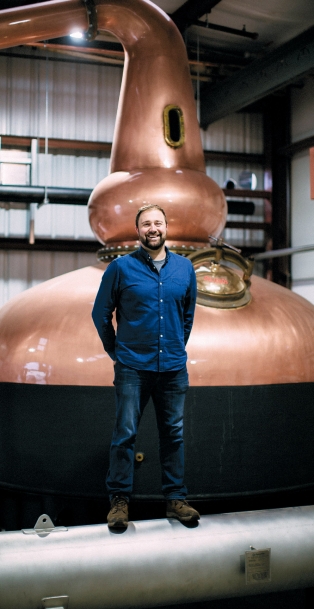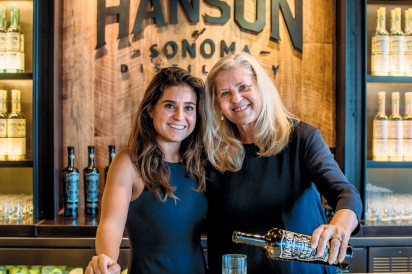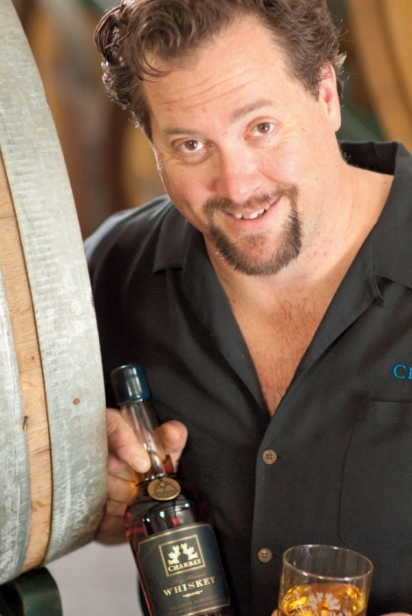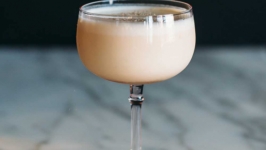Potent Potables
’TIS THE SEASON FOR LOCALLY DISTILLED WHISKEYS
If you’re a whiskey lover as well as a Wine Country locavore, you’re in luck. Hidden amongst the vines is a cluster of highly skilled grain-to-glass micro-distillers, producing world-class whiskeys, aged and ready for your drinking pleasure.
Here I highlight three local distillers who approach the whiskey craft with significant differences in raw ingredients and style of still, as well as finishing techniques, which render whiskeys with distinct tastes and complexities. There are also many others well worth exploring— find this story at EdibleMarinAndWineCountry.com for more of our favorites, and a bonus Earl Grey Citrus Flip cocktail recipe.
WHISKEY OR WHISKY?
Whether you use the “e” or not depends on where it’s made. In the United States and Ireland, it’s whiskey. In Scotland, Canada and Japan, it’s whisky, sans the “e.”
WHISKEY, BOURBON OR RYE
What is whiskey versus bourbon versus rye? All whiskey is technically distilled beer, made with a “mash” of crushed or milled grains— usually barley, rye, corn or wheat, or a combination thereof. It’s the particular combination, and ratios therein, that make a whiskey a bourbon or a rye. The grains can be also be “malted” (germinated then dried in a controlled environment) and/or smoked, adding to the complexity of ingredient choices.
The liquid that is produced when the distiller’s choice of mash is combined with boiling water is referred to as the “wort.” Yeast is added to the wort and the mixture is allowed to ferment, after which it is drained and “cooked” in a still, aka “distilled.”
According to U.S. regulations (specifically, the Federal Standards of Identity for Distilled Spirits), to be labeled bourbon a whiskey must be made with a mash of at least 51% corn and be aged in new, charred oak barrels. And made in the United States—making it a uniquely American spirit.
Also according to U.S. regulations, a rye must use 51% rye in its mash. The rye may or may not be malted. Canada, also a significant rye producer, does not specify a minimum percentage of rye.
TO BARREL OR NOT TO BARREL
All whiskey comes out of the still clear. The spirit’s color, and a lot of the flavor, comes from various finishing processes. (“Moonshine” is non-barrel-aged, so clear, whiskey.) Makers can affect nuances and complexities of the whiskey’s nose, palate and finish after distillation through blending, proofing, barreling, casking and aging. Some adhere strictly to tradition, while others get creative. This may entail “double-barreling” in old bourbon, cognac, Chardonnay or sherry barrels after the initial aging in traditional new charred American oak. Northern California Wine Country’s damp, foggy weather makes for good barreling or aging conditions, say all our featured makers, which lends even more to the fine nuances of local spirits.
Making whiskey is craft of patience. It takes years to make a good one. Our featured crafters are still relatively young in the global whiskey game, and we expect good spirits to pour out of Wine Country for years to come.
HANSON OF SONOMA DISTILLERY
Known for their award-winning grape-based organic vodkas, the Hanson clan surprised us all with the release of a double-barrel single malt whiskey this past fall. Their methodical approach to whiskey making, and understanding of the art and finesse of casking, quickly propelled them into the spotlight.
Shortly after Hanson started putting out their first vodkas, Scott Hanson—the father of Chris, Brandon, Darren and Alana, all of whom are involved in the Carneros-based distillery, along with their mother and Scott’s wife, Judy—got an itch to make whiskey. He had previously spent time deeply submerged in whiskey history and lore while producing the movie Lawless, based on a true story of three bootlegging brothers in the Prohibition era.
So, despite the vodka business keeping them all quite busy, the family began to educate themselves on making whiskey, traveling to visit distillers all over the world. They eventually settled on a blend of Scottish and Japanese styles for their Double Barrel Single Malt Whiskey. A traditional Scottish distillation process and a copper double-pot-style still create the base character of the spirit. Japanese barreling and casking techniques lead to greater complexities, in both color and flavor.
The finishing process, and time itself, are crucial to the outcome. It takes years and a lot of trial and error to master the process, the family admits. Despite having started their whiskey endeavor a mere five years ago, the years of research and a meticulous approach to the craft has already produced an incredibly smooth 100 proof whiskey.
Currently, the whiskey is for sale through the Hansons’ two tasting rooms—one at the distillery in Carneros (Sonoma) and the newly opened Sausalito location inside the Hanson Gallery of Fine Art. The Hanson family has owned the two-story gallery that features the work of various artists, including Scott Hanson, for over 35 years.
Double Barrel Single Malt Whiskey: $95/100 proof
Mash: Four distinct malted barleys, all grown in the U.S.
Aging: Aged four years in bourbon barrels and casks, then finished in Spanish Olorosso sherry casks (and a few others the family is keeping secret for now)
Nose: Caramel, biscuit, chocolate, grass and flower petals
Palate: Smooth and delicate with soft vanilla, sweet barley and spice
Finish: Slightly fruity, long, piquant and peppery
CHARBAY DISTILLING
The Karakasevic family has crafted spirits since the 18th century, originally in Serbia, then Napa County and currently in Ukiah. Miles Karakasevic is the founder of the American iteration of the enterprise, and the teacher of current 13th-generation Charbay master distiller Marko Karakasevic. Marko now runs the family business alongside wife, Jenni.
Charbay is world-renowned for its wide array of distilled spirits, but it was Marko’s early obsession with brewing beer that led to his particular style of whiskey making. Whiskey, as I kept hearing as I researched for this article, is simply distilled beer—but that’s not necessarily true. Fermented grain mash destined for whiskey is typically hopless and, when distilled, often becomes sour, boozy and thin, like water. The Karakasevics’ innovative idea was to distill whiskey from high-quality, bottle-ready beer. They believe they were the first in the world to do so, and now other distillers are following their lead. The unique technique yields complex, layered results. “When you distill delicious, you get delicious,” as Marko says.
While many whiskey makers concentrate on finishing techniques to control flavor, Marko believes the quality of ingredients and the distillation process itself are far more important. He admits that the process he utilizes is extraordinarily challenging. Not only does Charbay use a 1,000-gallon copper Alambic Charentais pot still (the “official” onion-shaped Cognac still used in France and not widely used in whiskey), but all of their whiskeys are made using a proprietary double-distillation process. The still, chosen for its extraordinary ability to concentrate flavors, is operated entirely manually, requiring all cuts (the process that separates the various concentrations of the distilled product—aka the “heads,” “hearts” and “tails”) to be made by an individual’s sense of taste and smell. That would put a formidable burden on most distillers, but not Marko. He prefers it. It allows him to tailor the cuts in a way that captures all the flavor notes, from light and floral to deep and warm.
One of five current Charbay whiskey releases, the distiller’s Doubled & Twisted Whiskey Lot No. 2 is a complex, yet highly drinkable spirit. It’s recommended by many mixologists as a gateway whiskey for new brown-liquor drinkers. On the other end of the whiskey spectrum, Charbay’s longer-aged (and more expensive) whiskey is the spirit those same mixologists say they drink at home.
Doubled & Twisted Whiskey Lot No. 2: $50/90 proof
Mash: 50% 4-year straight malt whiskey, 30% 8-year black stout whiskey and 20% pilsner whiskey
Aging: Single malt and pilsner whiskey is aged in new American oak casks; the stout in French oak barrels
Nose: Hoppy and vegetal, with notes of nutmeg and cinnamon
Palate: Bold tinges of sweet smoky chocolate stout and coffee with an oaky essence
Finish: Comforting charred autumnal spices, and a soft and slight pepper citrus linger
SONOMA DISTILLING CO.
Unlike the first two distillers in this piece, Sonoma Distilling Co. only makes whiskey. Now in its 10th year, SDC combines modern thinking with traditional methods to make an array of complex whiskies. This combination of the new and the old, unique among many American whiskey makers, is driven by founder and whiskey maker Adam Spiegel.
The various grains that make up SDC’s mashes are all GMO-free, and mostly grown by local farmers with whom the distillery has built relationships. In keeping with a “back-to-the-future” ethos becoming more and more common, especially in our area, used mash from the distillery goes back to the farmers, enriching their soils to grow more grains, impacting sustainability. The same modern thinking has paved the way to greater process control with on-site grain smoking and malting.
At the distillery, six 1,000-gallon open-top fermenters line the fermentation room like giant soldiers. The open-top fermentation method allows the natural yeasts and bacteria in the distillery to affect flavors. Beer folks, and many whiskey folks, would never use open-top fermenters due to the lack of control. Adam, on the other hand, swears his whiskeys taste of Sonoma, and achieve great flavor from the “uncontrollable.”
One of the most impressive parts of the SDC distillery is the massive 3,000- gallon, custom-crafted in Scotland Alembic copper pot still. It is modeled after traditional Moorish still styles, using Spanish technology and modernized for increased production, viscosity and flavor. This particular still leaves the fermented mash liquid (the wort) and grains together in the still. The still evaporates the liquid through the beautiful mosque-like top, retaining all the oils and esters that happen during fermentation. Adam makes clear that these stills are not the most efficient he could use, but this method leads to great complexities and drinkability, not to mention improved viscosity. Several smaller versions of the still dot the production floor, increasing capacity.
The barreling process at SDC is equally traditional and modern, utilizing a Cognac- and brandy-making method that Adam learned from renowned master distiller and blender Hubert Germain Robin. Various-sized barrels—from 15-gallon to 30-gallon to the industry-standard 53-gallon—are utilized with various theories and proofing. The distiller’s new 9,000-square-foot barrel room was modeled after old Scottish-style barrel rooms: cold, wet and damp. Sonoma County is built-in fog country.
Also driven by Spiegel, there is a smart, humble and youthful spirit to this distillery that strives for balance between old and new styles. For a meager $15 you can get a full tour and tasting, and see for yourself.
Sonoma Whiskey Rye: $50/94 proof
Mash: 100% non-GMO rye (20% of that is malted)
Aging: Charred new American oak, finished in bourbon barrels, a minimum of 15 months
Nose: Robust, earthy and oaky, with herbaceous vanilla cream and cardamom notes
Palate: Vivacious and thick, smooth, grain spices, white pepper and winter citrus
Finish: Vanilla cream, warm spices, toasted grains, walnut and dissipating pepper
Wine Country is flowing with whiskey producers. Here are a few more we like:
The Local Staples
Alley 6 Craft Distillery Rye Whiskey: Small-batch whiskey aged in charred new American white oak barrels. There are hints of vanilla and caramel, accenting a spicy rye malt mash.
Spirit Works Distillery Straight Rye Whiskey: The all-female distilling team produces this grain-to-glass spirit with heart, skill and ingenuity. It tastes of leather and light autumnal spices.
Stillwater Spirits Moylan’s American Rye Whiskey: Aged for four years, this whiskey has initial fruity, toasty tastes. It’s robust and smoky with honey-sweet undertones.
Creative Endeavors
Griffo Distillery Stout Barrel Whiskey: Finished in new American oak stout barrels from Lagunas Brewery, this corn-based whiskey has predominant coffee and espresso notes.
Sonoma Distilling Black Truffle Rye: This (small bottle) rye is infused with French black Périgord truffles. Layers of musty earthiness linger, leaving a warm sweet dirt taste on the tongue. It sounds weird, but it’s totally appealing.
High Rolling
Charbay Distillery Pilsner Whiskey Release, III: This is the third release from the 1999 Collector’s Whiskey Series, released in five bottlings. Distilled from local bottle-ready pilsner, it has notes of vanilla, caramel and chocolate. Complex leather and marzipan flavors linger on the palate with a rich hot finish. Only 10 barrels released, and the price, $425 a bottle, reflects it!
Do-Gooder
Charbay Distillery Whiskey R5 Lot. No. 5 Firehouse Whiskey: This whisky was distilled in 2013 from bottle-ready Racer 5 IPA and aged for five years in French oak. Toasted cinnamon and honeysuckle essence invite the palate to enjoy earth, flower and tobacco flavors with an herbaceous spice finish. The Firehouse whiskey was made in honor of survivors of the Northern California fires. Charbay has pledged to donate $10,000 to Stand for Kindness to help survivors restore their lives. It has been one of the most active fundraisers for fire victims in the industry.








